Muhly Grass Growing Guide – Uniquely Gorgeous Native Grass Will Add Texture and Interest To Any Garden
Muhly grasses are fabulous additions to any garden and some of the most beautiful native grasses. They are eye-catching thrive even in poor soil.
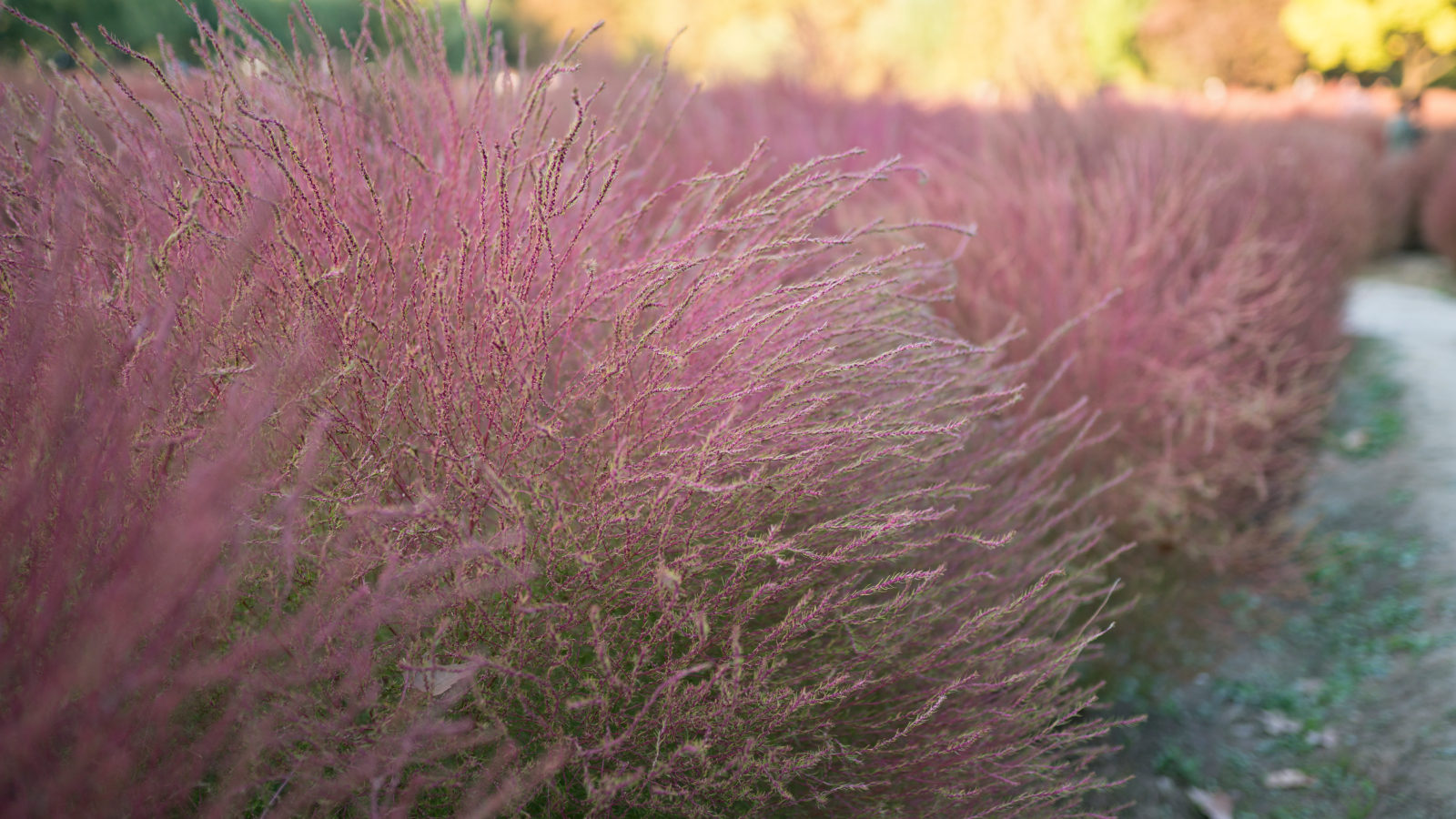

Amy Draiss
Quick Facts
Botanical name: Muhlenbergia capillaris
Height: 1-4 feet (0.3-1.2 m.)
Spread: 2-4 feet (0.6-1.2 m.)
Sun exposure: Full
Soil requirements: Well-draining
Hardiness zones: USDA Zones 5-9
When to plant: Late winter to early spring
A plant with many common names, Muhly grass is an outstanding ornamental grass. It boasts an ethereal haze of pink plumes late in the season.
The Muhlenbergia are found in the Western hemisphere, primarily in arid to semi-arid regions. The most commonly known of this group of grasses is Muhlenbergia capillaris, or pink Muhly grass, but there are over 150 species in the genus. The biggest need for muhly grass care is drainage. Plants in heavy soils will not perform well, and may not survive.
Once that hurtle is passed, these ornamental grasses will brighten the landscape in their form and color.
Muhly Grass Care
The genus, Muhlenbergia, was named after a self taught botanist, Gotthilf Muhlenberg. Most of these grasses are found in Mexico, Guatemala, and the eastern and central United States where it grows in clay and rocky soils.
Muhly grasses are native ornamental grasses and are perennial in nature. They can be grown in USDA hardiness zones 5-9. In warmer regions, this is a relatively fuss free plant provided it is in a well draining site.
Light
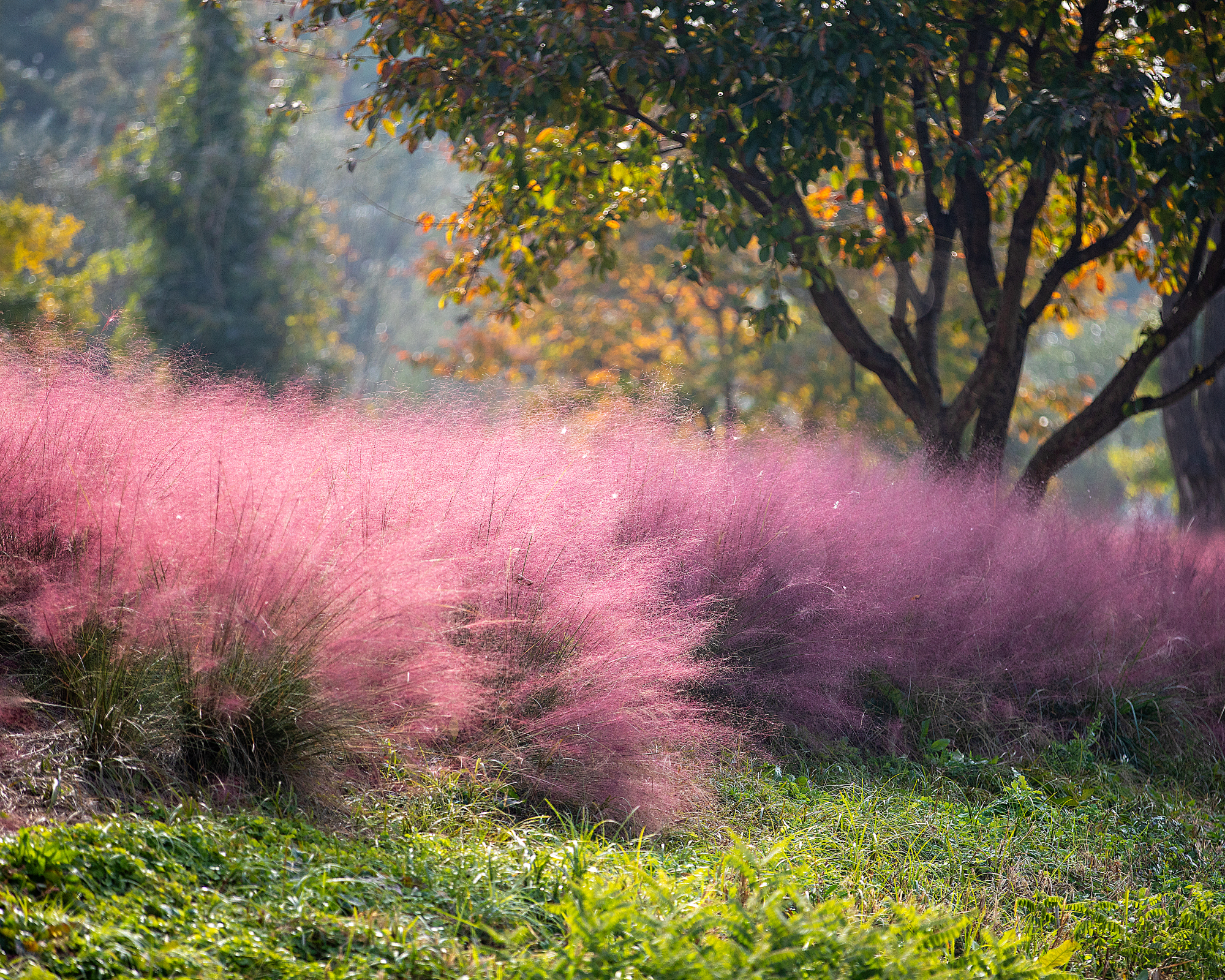
Muhly grasses hail from regions with bright sunlight throughout most of the year. They should be planted in full sun for best results. The grass can tolerate partial shade but the color of the inflorescences will not be as arresting.
Water
Pink Muhly grass is touted as a xeriscape garden plant due to its tolerance to drought. The plant needs infrequent watering once it is established. However, keep the soil moderately moist for the first few months after installation. You can purchase pink Muhly grass in the Gardening Know How Shop.
Sign up for the Gardening Know How newsletter today and receive a free copy of our e-book "How to Grow Delicious Tomatoes".
Temperature and Humidity
Muhlenbergia grasses are native to areas with very hot temperatures year round. They have little freeze tolerance, but if a light, short frost is expected, cover the plants and they should be fine. Their native regions have low humidity but the plants can thrive in areas like Florida, where ambient moisture is high.
Soil
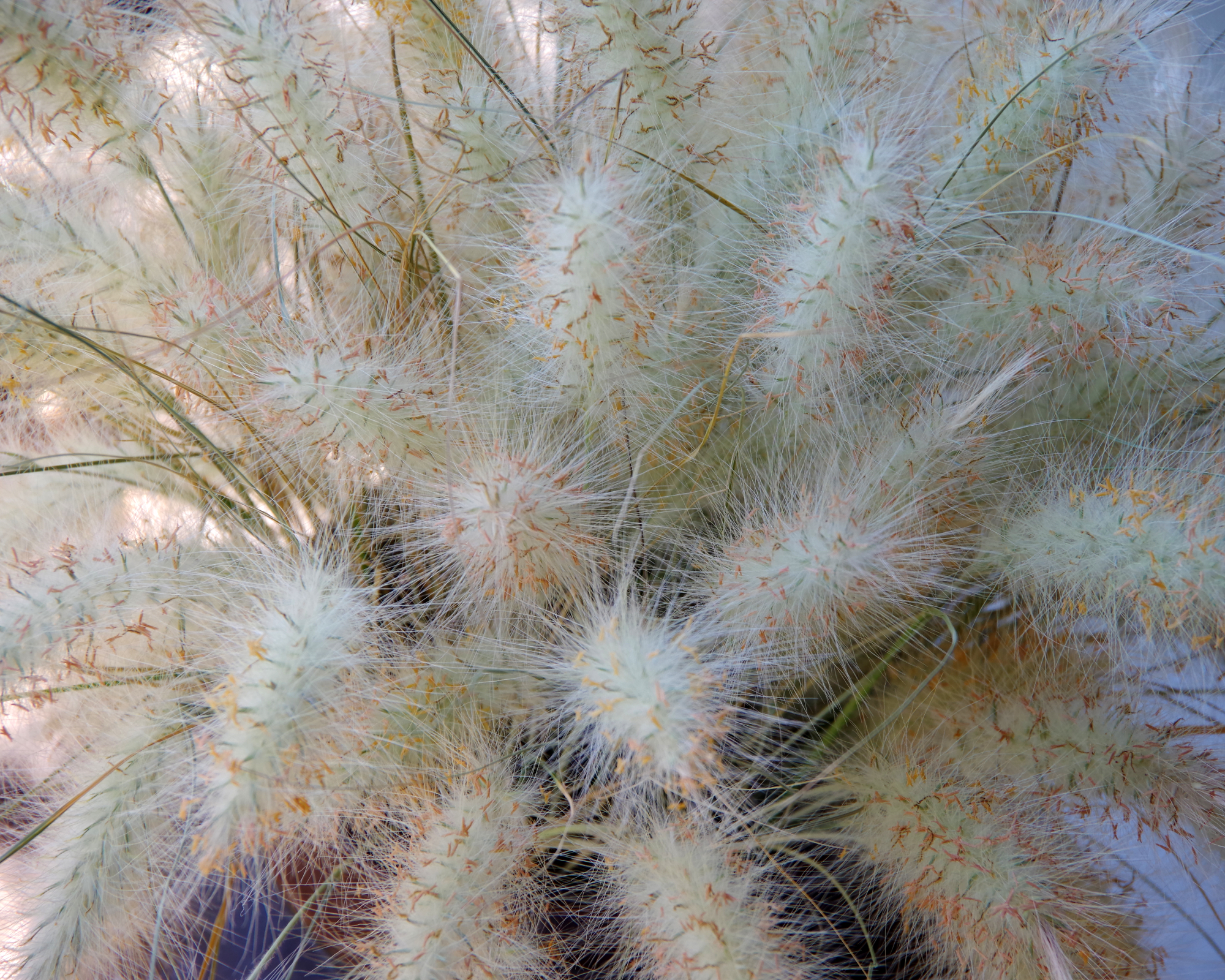
The plants can tolerate almost any soil. Rocky, clay, infertile, or chalky soil. But the soil must percolate quickly. If your soil is heavy, amend it with some gritty material prior to planting pink Muhly grass.
Fertilizer
Apply a balanced fertilizer in early spring as the plant comes out of dormancy. This is not strictly necessary but will help fuel new growth and inflorescence development.
Problems, Pests & Diseases
Muhly grasses have few problems when planted in well-draining soil. There are few pest issues and they are even resistant to deer browsing. Tar spot, which is a fungal disease, may occur in crowded or over-fertilized plants.
How to Plant Muhly Grass
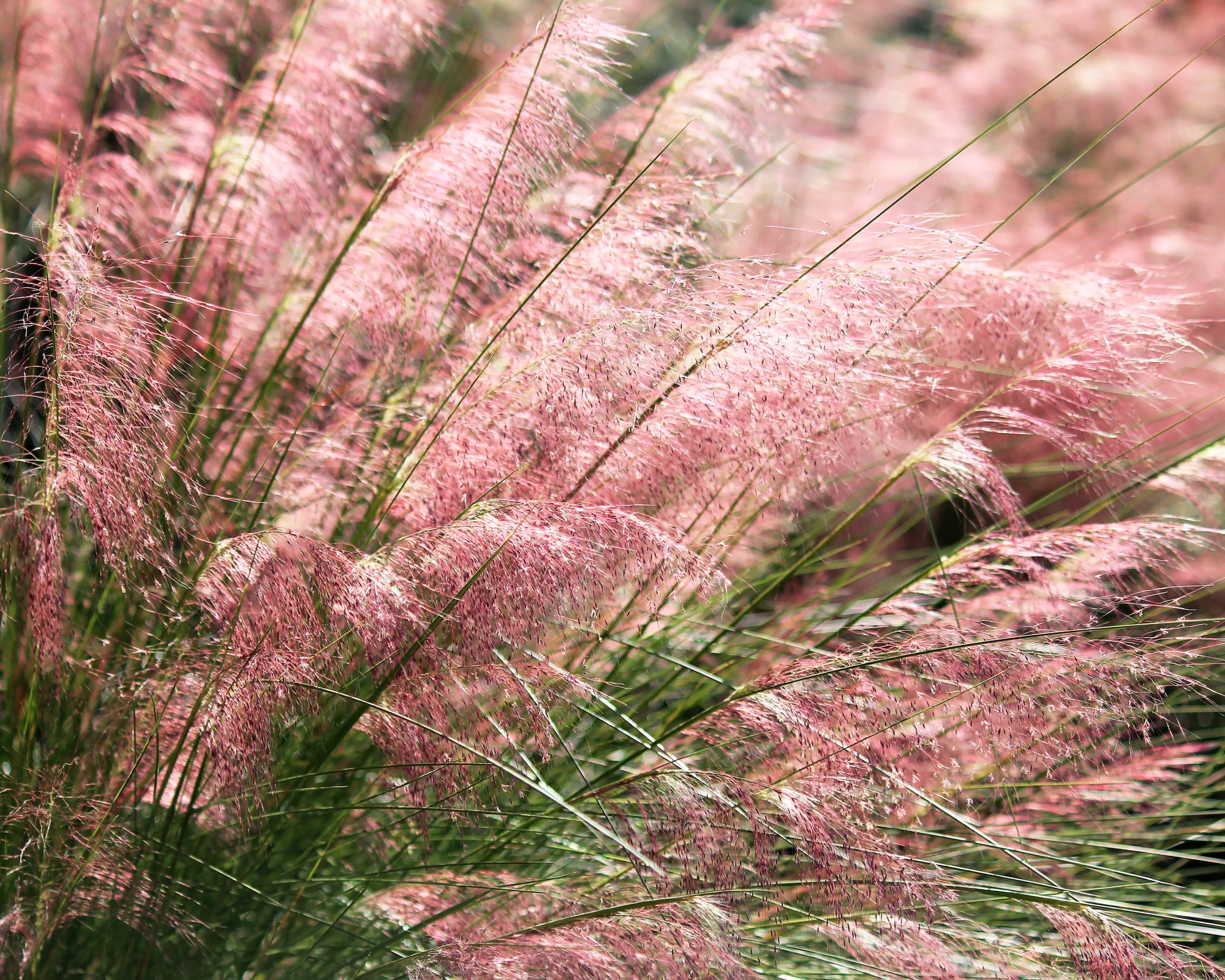
Select a full sun location. Next, make sure the area’s soil will drain well. Dig a hole twice as deep and wide as the nursery pot. Fill the hole halfway with water. Watch to see that the water easily penetrates deep into the soil. If it doesn’t, amend the soil with organic matter like compost. A premium compost soil amendment, like this one from Home Depot, is a good place to start.
Remove the grass from its nursery pot and fluff out the roots gently. Fan the roots into the hole and backfill, ensuring only the roots are covered and not the leaves. Pack in the soil around the roots and base of the plant.
Pruning
For the best appearance, the grass can be cut back to within 6 inches (15.24 cm.) of the soil. This will ensure any new growth can emerge easily and take away old, damaged, or dead blades. Do this in late winter before new growth begins. For all your pruning needs, our editors recommend the Fiskars bypass pruning shears that can be found on Amazon.
Propagation
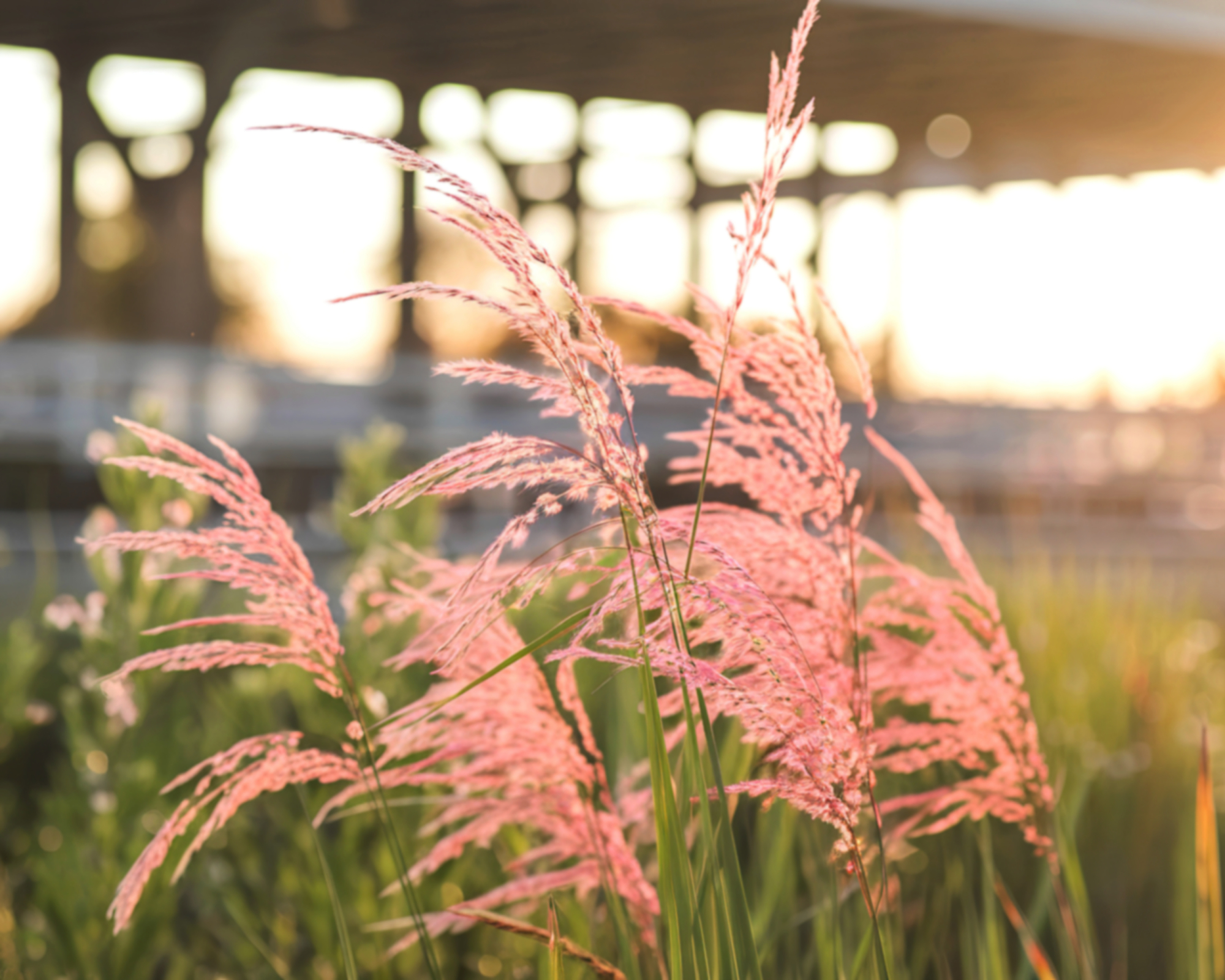
Muhly grass will grow well from seed, but it will take several years to achieve a mature plant. A quicker method is through division. Dig up the plant and cut it in half. Replant both halves separately and you now have two clumps of grasses.
Repotting
Container-grown Muhly should be repotted every year. The plant will outgrow its container and need larger pots over time. Repotting will also allow for fresh soil. To make the plant easier to manage, repot in late winter, after the blades have been cut back.
Overwintering
Container plants in northern climates should be brought into an area that doesn’t freeze but is cool. Those in the ground can be protected from light, short freezes by mulching around the base. If a brief freeze arrives, cover over the plant with a sheet or other item. Remove it after the danger of frost has passed.
Muhly Grass Varieties
While pink Muhly has made a splash in the gardening scene, there are several other varieties available.
- White Cloud is a cultivar bred for its beautiful white inflorescences. It blooms later and has a more upright form than pink Muhly. White Muhly grass can be found at Home Depot.
- Rose Muhly has fine leaf blades and a cloud of reddish plumes.
- Bamboo Muhly is not grown for its flowers but for its bamboo-like appearance.
- Lindheimer’s Muhly has bluish gray leaves and purple flowers. You can purchase Lindheimer's Muhly plants from Daylily Nursery through Amazon.
No matter what variety of Muhly grass you choose, it is sure to add beautiful texture to your garden. In addition to looking great, it is also beneficial to your local wildlife and insects. Native grasses are important to our ecosystem and Muhly varieties will bring benefits, in addition to their visual appeal.

Bonnie Grant is a professional landscaper with a Certification in Urban Gardening. She has been gardening and writing for 15 years. A former professional chef, she has a passion for edible landscaping.
- Amy DraissDigital Community Manager